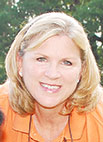That’s A Dexter
Ted Anderson grew up around cattle on a farm in Osage County, Kansas but was unfamiliar with the obscure Dexter breed. Even through his studies at Kansas State University and upon graduation with a degree in Zoology, Ted never encountered the small breed. It wasn’t until his retirement from the US Food and Drug Administration (FDA), after 30 years of inspecting overseas pharmaceutical manufacturers that he discovered a charming variety of miniature cattle and knew it was just right for his small farm in Strafford, Mo.
Longhorns For The Long Haul
"Longhorn cattle are more than horns and hides,” stated Greg Brown of Lucky Falling Star Ranch in southern Howell County. “People used to think of Longhorns and think of crazy rodeo cattle raised for horns. There are many other options for Texas Longhorns these days,” he explained.
The Pursuit of Passion
Michelle Wilson's passion for horses began at age 13. Until then, she had been a city girl before her mother bought her riding lessons for her birthday. Michelle recalled, “I spent every day riding,” after her first ride.
Done Rovin’ Beefalo Farm
What began as a retirement pastime has grown into something a bit larger. “It’s a hobby that got carried away,” said Larry Hacker. After 28 years of military life, Larry and Nelda Hacker of Lincoln, Ark., have traded a life of travel with the United States Army for “done roving” roots raising Beefalo cattle. In 1986 they were presented with an opportunity to purchase two heifers as a start in the Beefalo business. Since then their operation has grown to over 100 head of cows, providing breeding stock to buyers from Minnesota to Texas and Colorado to West Virginia.
Ozarks Roots-When the Groundwork’s Been Laid
A close look at Robert Stobaugh’s family tree will find farmers in every direction.
Rock Creek Farm
It's amazing to step out onto the very green, lush, peaceful farm that’s been in the Frost family for 105 years, and five generations. “Since 1903,” said Bob Frost, a third generation farmer in the mountains of Johnson County, Arkansas. "My granddad, John Frost, bought 80 acres in 1903, and added 40 more at a later date. He built a small house they later named the weaning house. His son Hall Frost was born in 1906; they then built the big white farm house, which sits across from the smaller home. When Hall got married they moved into the weaning house. They both spent their whole lives on this farm," Bob said.
An Eye for the Animals
North of Lebanon, Mo., on a tract of land bordered by the rich Niangua River, and adjacent to regal bluffs and hillsides lies an 800-acre farm with a long, rich history.
Depression To New Millennium
When Earnest Smith, 78, of Summersville, Mo., steps up into his climate controlled cab tractor, his thoughts must often go back to a different time and a different way of doing things. After all, his farming experience spans eight decades and a lifetime of change.
No Overtime at the Farm
Seth Cooper never planned on being a full time farmer, even though his parent's commercial herd was home to over 400 cows. But time does have a way of changing things. He went to college on a football scholarship and got a degree in biology. Seth's dad, Randy, owned the general store, Longview Grocery and Lumber Supply, in the small town of Rocky Comfort, Mo., for about 20 years before Seth came home from college and became his dad's partner in both the farm and the store.
Techniques in the Black
A new generation of farmers is coming about these days. Whereas years ago most farms were family operated and knowledge was passed from father to son, many of today's livestock producers don't have the advantage of growing up on a farm. Shirley Williams is a case in point. She said, "I grew up in the city in a family that wouldn't even let me have a dog in the house." Luckily, her maternal grandfather had agrarian roots, and could see the makings of a good stock woman in Shirley. She inherited his passion for stock while spending family vacations at his horse ranch in Louisiana.











